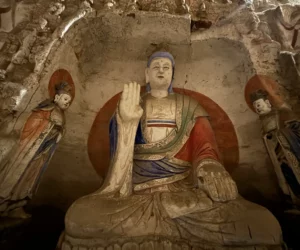Wangmu Palace Grottoes: A Hidden Gem of Ancient Buddhist Art in Gansu The Wangmu Palace Grottoes, also known as Wangmuugong Grottoes or Xiwangmu Grotto, are nestled in the western suburbs of Jingchuan County, Gansu Province. Located at the foot of Gongshan Mountain, where the Lihe and Jinghe rivers meet, these grottoes hold a special place…
Northern Wei Dynasty
The Northern Wei Dynasty, spanning from AD 386 to 534, marks a significant period in Chinese history, characterized by its unification efforts, cultural assimilation, and monumental architectural achievements. Founded by the Tuoba clan of the Xianbei people, a nomadic group from the northern steppes, the dynasty initially established its capital at Pingcheng (modern-day Datong, Shanxi Province) before moving it to Luoyang in AD 493. This move symbolized a shift towards embracing Han Chinese cultural traditions, a strategic effort to consolidate power and legitimize their rule over the conquered territories.
Under the reign of Emperor Taiwu, one of its most notable rulers, the Northern Wei embarked on military campaigns that significantly expanded its domain, bringing a large portion of northern China under its control. Emperor Taiwu also initiated a series of reforms aimed at centralizing the government, reducing the power of the aristocracy, and integrating different ethnic groups within the state. These efforts laid the groundwork for the dynasty’s administrative structure and its attempts to create a more cohesive society.
Religion played a pivotal role in the Northern Wei Dynasty, with Buddhism emerging as a dominant force. The dynasty is renowned for its patronage of Buddhism, which included the construction of the Yungang Grottoes—a masterpiece of Chinese Buddhist art. The promotion of Buddhism served not only as a means of cultural integration but also as a tool for the state to exert its influence over the populace, with Buddhist monasteries becoming important centers of power and learning.
Social and daily life during the Northern Wei Dynasty was marked by significant changes, especially with the implementation of the Equal-field System and the adoption of Chinese administrative practices and attire by the ruling elite. These policies aimed at redistributing land to ensure equitable ownership and integrating the Xianbei and Han Chinese cultures. The dynasty’s efforts to promote agriculture, along with its military conquests, contributed to economic stability and growth, improving the livelihoods of its subjects.
The Northern Wei Dynasty was also a period of remarkable artistic and architectural achievements, with the Longmen Grottoes and the Yungang Grottoes standing as enduring symbols of its cultural legacy. These sites, with their intricate sculptures and carvings, reflect the dynasty’s artistic innovation and its role in the development of Buddhist art in China.
However, the dynasty was not without its internal strife. The later years of the Northern Wei saw a series of succession disputes, rebellions, and palace intrigues that weakened the state. The most significant of these was the rebellion led by General Gao Huan, which eventually led to the dynasty’s division into the Eastern and Western Wei in AD 534, marking the end of the Northern Wei Dynasty.
Despite its eventual decline, the Northern Wei Dynasty’s contributions to Chinese history are undeniable. Its efforts at unification, cultural assimilation, and administrative reforms had a lasting impact on the development of Chinese civilization. The dynasty’s promotion of Buddhism and its artistic achievements continue to be celebrated as part of China’s rich cultural heritage.
In conclusion, the Northern Wei Dynasty was a period of great transformation and integration in Chinese history. Through military conquests, administrative reforms, and cultural patronage, it laid the foundations for the unification of China and the flourishing of Chinese Buddhism. Its legacy, embodied in the monumental art and architecture it left behind, continues to captivate historians and art enthusiasts alike.
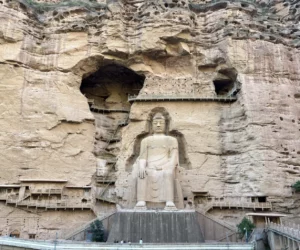
Bingling Temple Grottoes
The Bingling Temple Grottoes: A Marvel of Ancient Buddhist Art The Bingling Temple Grottoes are carved into a cliffside on the west of Dasigou in Jishishan Mountain. They are located in Taping Village, Wangtai Town, Yongjing County of Gansu Province, China. These grottoes are a remarkable treasure of ancient Buddhist art. A Historical Overview The…
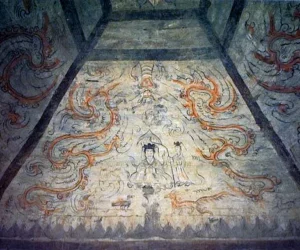
Dingjiazha Tomb No. 5
Overview of Dingjiazha Tomb No. 5 The Dingjiazha Tomb No. 5 is an underground mural tomb located in Jiuquan, Gansu Province, China. Dating back to approximately 384-441 AD, it sheds light on a transitional period between the Sixteen Kingdoms and the Northern Wei Dynasty. Archaeologists discovered the tomb in 1977, and its murals have become…
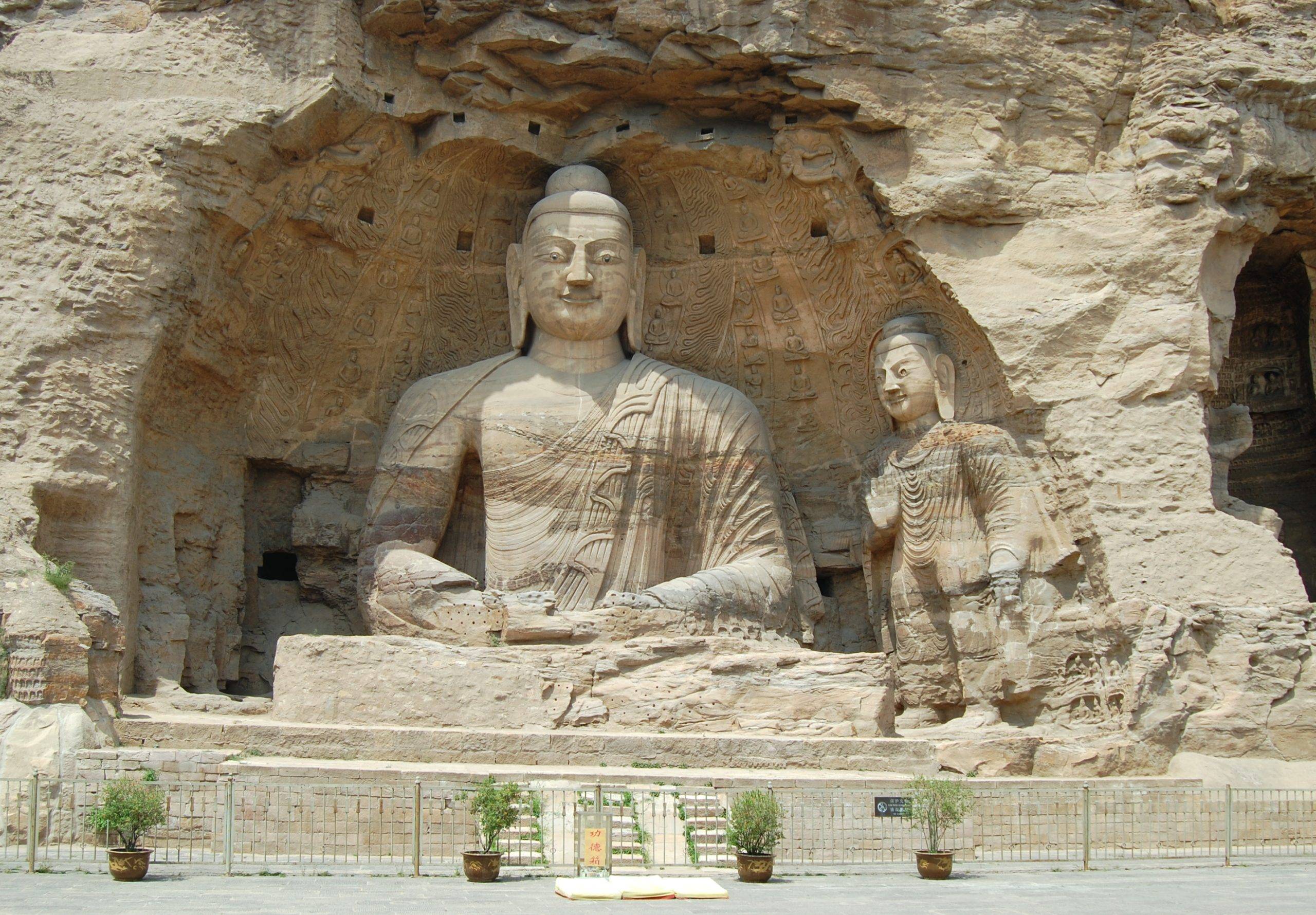
Yungang Grottoes
Located in the city of Datong, northern Shanxi province, China, the Yungang Grottoes are a spectacular sight to behold. This collection of shallow caves is adorned with over 51,000 statues, representing the outstanding achievement of Buddhist cave art in China in the 5th and 6th centuries. The Yungang Grottoes are a testament to the power of religious devotion and the artistic mastery of the ancient craftsmen.
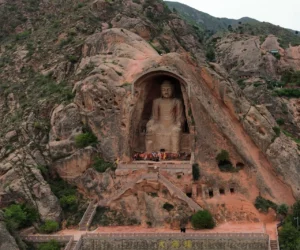
Xumishan Grottoes
Overview of Xumishan Grottoes The Xumishan Grottoes are a significant collection of over 130 Buddhist cave temples. Builders constructed these temples from the fifth century to the tenth century AD. They are located on the eastern edge of Mount Xumi in the Ningxia Hui Autonomous Region of China. Historical Context The construction of the Xumishan…
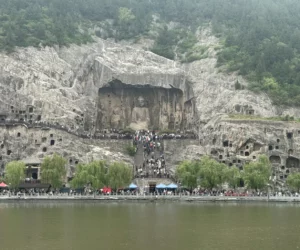
Longmen Grottoes
The Longmen Grottoes, a treasure trove of ancient Buddhist art, are one of the finest examples of Chinese Buddhist carvings. Located in Henan Province, China, these grottoes house tens of thousands of statues of Buddha and his disciples. Carved between the 5th and 8th centuries during the Northern Wei and Tang Dynasties, the site exemplifies the peak of stone carving art in ancient China. The Longmen Grottoes, stretching along the Yi River, reflect the profound changes in religious, cultural, and artistic life in China over several centuries.

